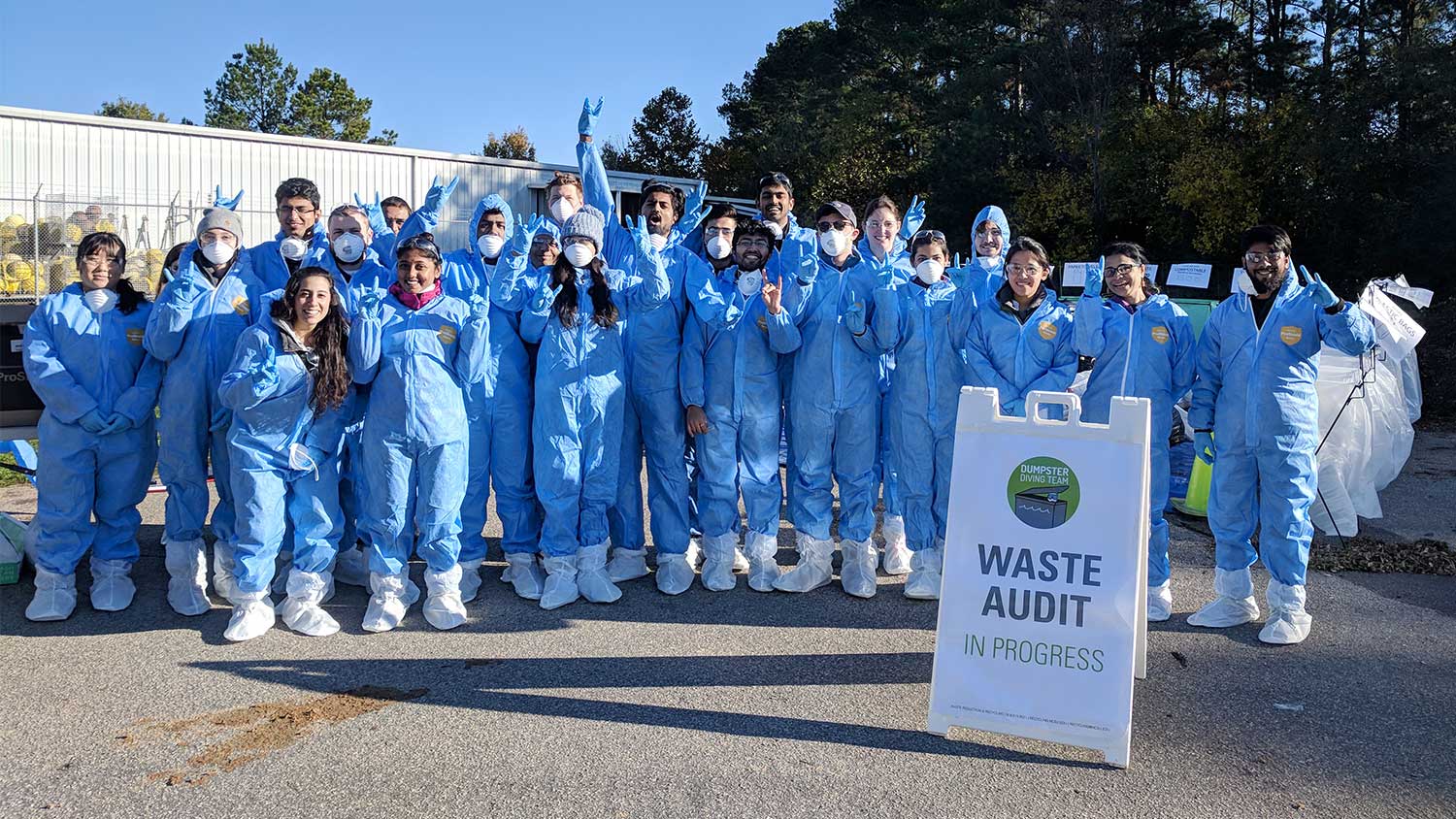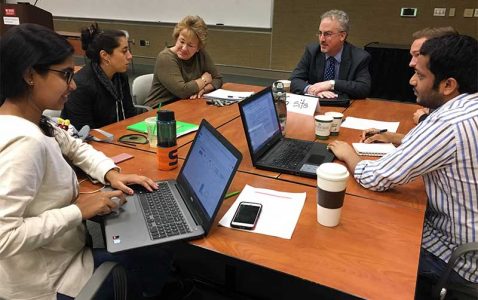Students ‘LEED’ McKimmon Center To Increased Sustainability

In a unique architecture course, students helped improve environmental sustainability at the McKimmon Conference and Training Center.
About 30 students and a major campus building are more equipped than ever for a sustainable future.
That’s thanks to an NC State course called LEED Lab, which brings together future engineers, architects and environmental scientists for a hands-on experience as sustainability consultants.
Using the Leadership in Energy and Environmental Design (LEED) rating system as a guide for sustainable best practices, the students in LEED Lab spent the Fall 2017 semester developing sustainability recommendations for NC State’s McKimmon Conference and Training Center.
“This class was not just an exercise to get a grade. This is a contribution to a facility at the university,” said Director of Continuing and Professional Education Chip Futrell, whose responsibilities include the McKimmon Conference and Training Center.
Boosting Sustainability
When LEED Lab co-instructors Liz Bowen and Traci Rose Rider approached McKimmon Center leadership about being the focus building for the course, Futrell and others welcomed the infusion of student ideas.
Opened in 1976, the McKimmon Conference and Training Center is the headquarters of the university’s robust continuing education program that serves the entire state of North Carolina. The building has more than 100,000 square feet and hosts about 200,000 visitors annually for a variety of meetings, conferences and training events.
LEED Lab students were tasked with evaluating the building’s sustainability performance and identifying ways to decrease environmental impact and costs. Class sessions consisted of group work, environmental analysis and testing and even a waste audit. The students also engaged with campus facilities managers and representatives from the course’s corporate partners: SAS, Wells Fargo, JLL, Lenovo, Schneider Electric, Stanford White and FMI Corporation.
Students learned to measure indoor air quality, analyze energy and water use, calculate payback periods on efficiency improvements and weigh tradeoffs. Save a bit of energy here, and it may increase costs elsewhere. Improve the environmental impacts in one area, and it may cause unintended consequences elsewhere.
“There are so many synergies and tradeoffs. If we’re doing a lot of good, there are always tradeoffs,” said architecture student Nick Lash.
On the last day of class, students presented their sustainability recommendations, which ranged from harvesting rainwater and installing new lighting to calibrating air handlers to optimize energy savings.
“The most rewarding part is to see students move from the position of student to the position as consultant and expert,” said Liz Bowen, a strategy consultant with FMI Corporation and course co-instructor.
A Rare Opportunity

The is the fourth time the LEED Lab course ‒ hosted by the College of Design’s School of Architecture in partnership with the University Sustainability Office ‒ has been offered on campus. Since the course began in 2013, nearly 100 students have evaluated sustainability in Nelson Hall, Bragaw Hall, Talley Student Union and McKimmon Center.
Though the buildings change, the interdisciplinary nature of the course is constant.
“What we are really interested in is providing this kind of interdisciplinary work that students don’t often get in classes,” said Traci Rose Rider, a College of Design research associate and course co-instructor.
The opportunity to work side-by-side with students from other majors was one of the reasons Prajakta Akhare participated in the course.
“This was my first encounter with an interdisciplinary type of course,” said Akhare, a graduate student studying construction engineering. “Every class was different, and it was a great experience.”
Real-World Impact
Through the course, the students earn documented project experience required to take the LEED Accredited Professional certification exam. This resume-building opportunity gives students an edge as they begin their careers, Rider said.
The course also leaves lasting benefits on campus. With a list of recommendations from students, McKimmon Center leadership now has a roadmap for boosting sustainability in the building.
“Everything you have spent your time on will be considered,” Futrell told the students during the final class session. “It would mean a lot to me if you come back in a few years as working professionals and see some of these recommendations implemented. We are very committed to the health of this building, so what you did means a lot to us.”